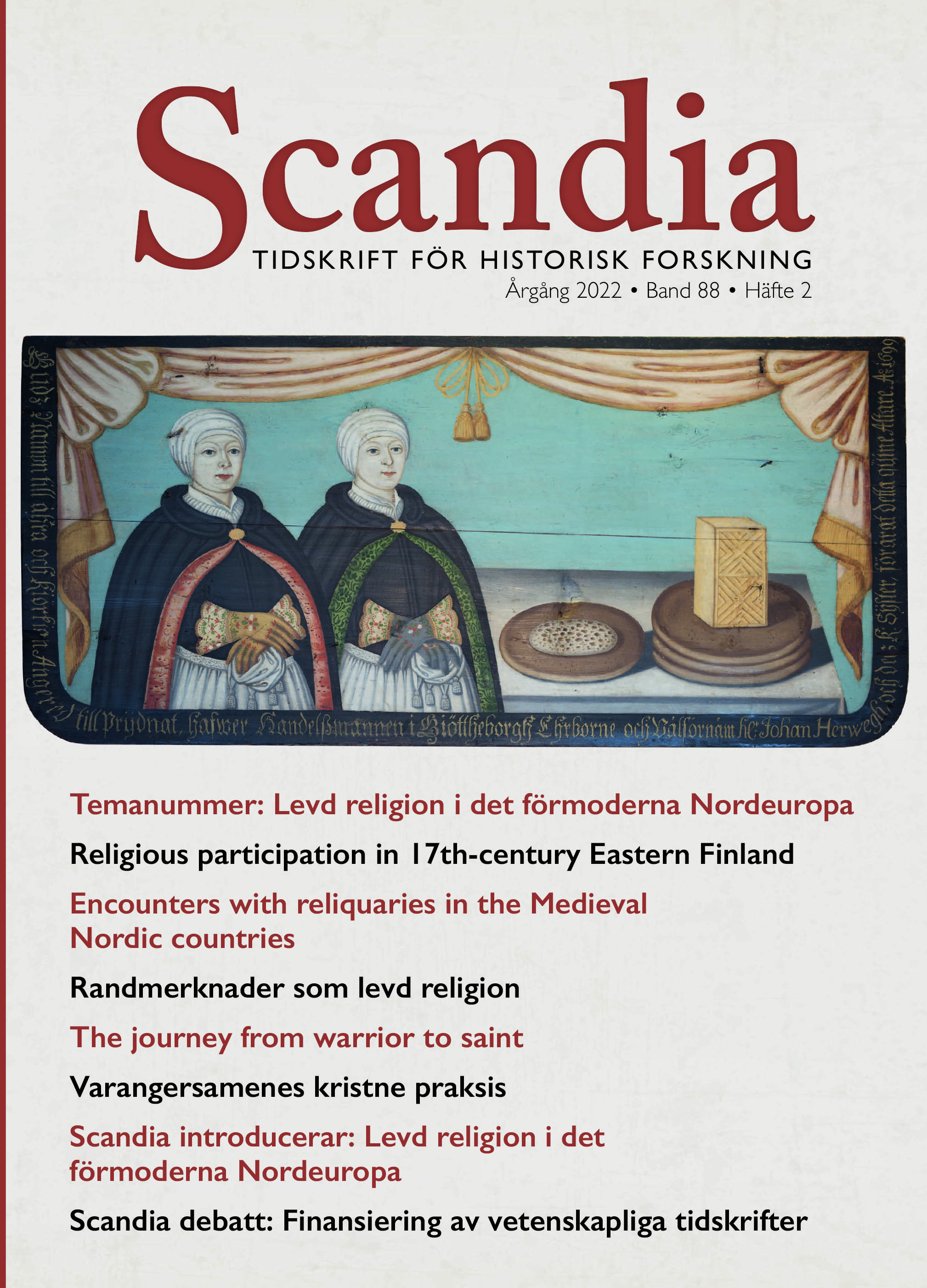The Christian practice of the Varanger Sámi in the face of missionary activities and colonialism
DOI:
https://doi.org/10.47868/scandia.v88i2.24803Keywords:
Sámi, Indigenous, Christianity, Colonialism, MissionAbstract
How did the Sámi indigenous population in Varanger, the far north-east of Norway, perceive Christianity at the turn of the 18th century? In court records and written sources from missionaries, the Sámi are described as practicing Christian customs as part of their lived religion. The only Sámi primary source is a drum used by Anders Poulsen. In connection to the court case against him in Vadsø in 1692, he offers a detailed description of how he uses the drum for divination in order to help people in need with the aid of the Christian trinity. The officials of the Danish King were convinced that Satan had lured the Sámi into performing his services. This demonology was at the core of Danish legislation and served as an ideological background for the colonialization of Sámi areas. The borders had not yet been drawn, which meant that the state affiliation of the Sámi inhabiting the border areas was at stake; in fact, the Russian church had been present in the adjacent Skolt Sámi area since the 16th century. The way in which Christianity was practised by Varanger North-Sámi indicates the influences of the Russian orthodox faith of their neighbours. Anders Poulsen is an example of someone whose religious and national identity defies the lines drawn by the states. He was born on the Swedish side of the inland area but lived most of his life along the coast of Norway. He used his drum to keep in contact with the forces that control the weather as well as the Christian deities, one of the most important being God’s mother, which he includes in the trinity. The Danish-Norwegian missionaries are currently presented as bringing the Christian gospel to the Sámi. The lived religion of the local Sámi was not recognized as a Christian faith but was interpreted as service to the Devil in disguise. When the backdrop was a contest for the Sámi traditional homelands, this portrayal of the Sámi as pagan in the 18th century served the state colonialism well. By reproducing this perception today, we neglect a history of the Sámi population integrating Christianity on their own terms in a network of trade, faith and human relations.





